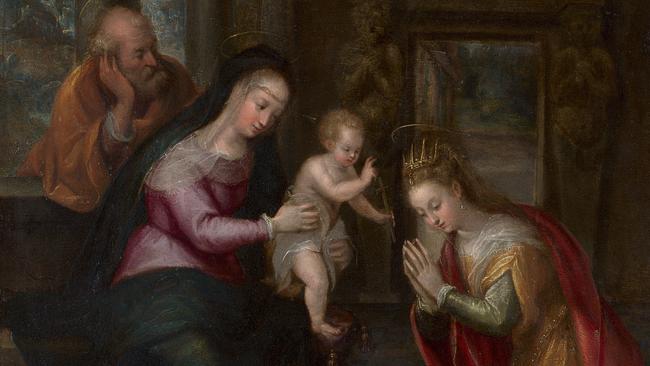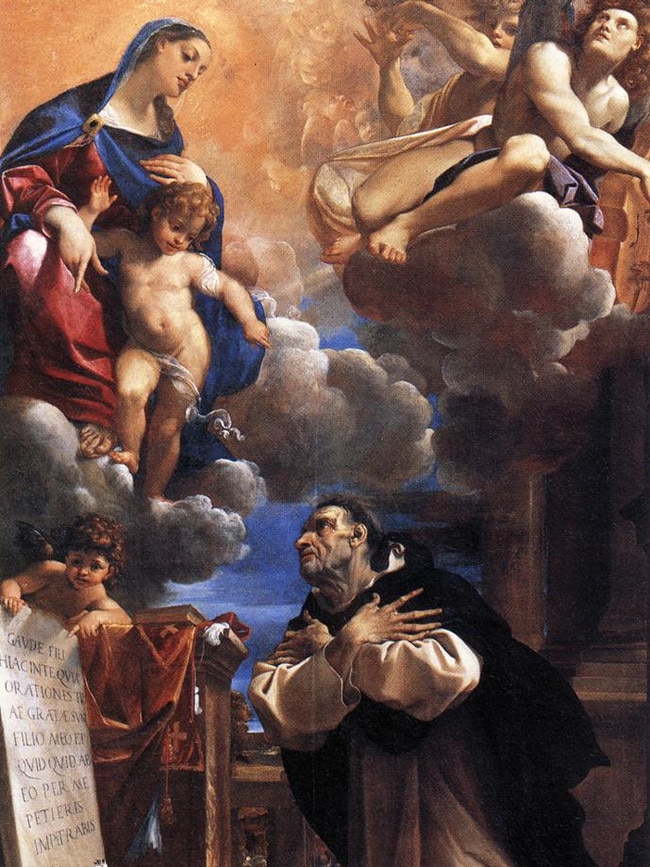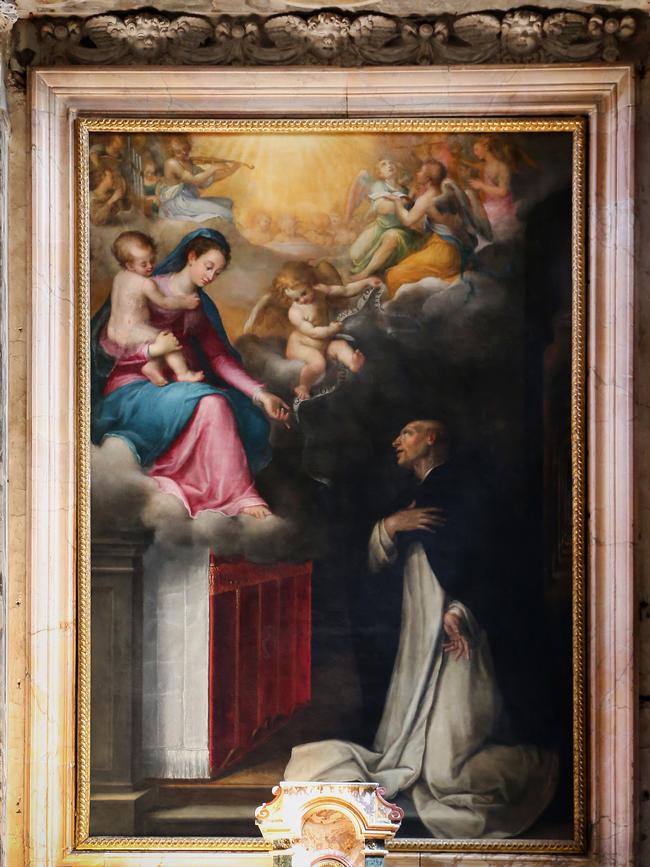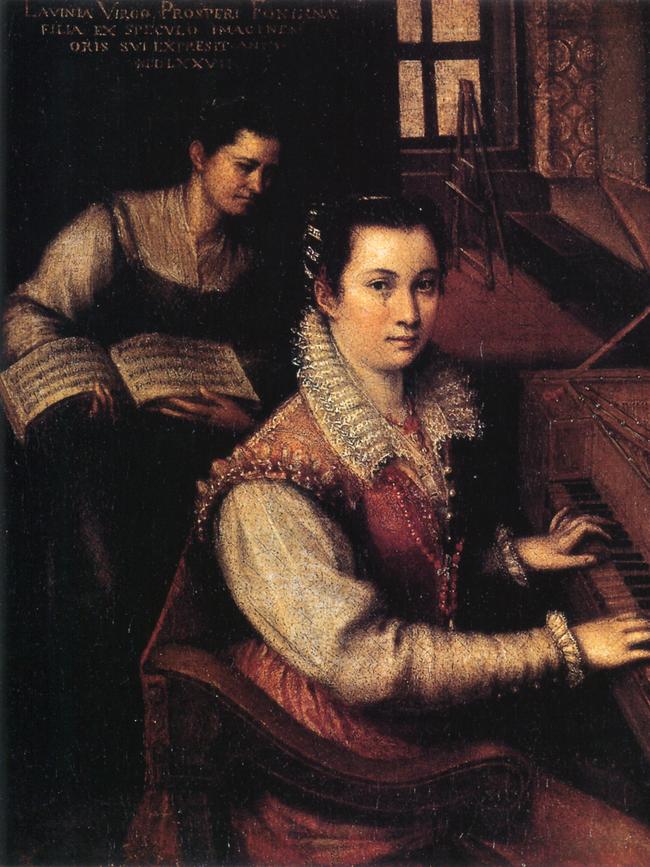Unearthing a female painting pioneer: NGV visual art review
Lavinia Fontana was not quite Europe’s first professional female painter, but she was the first woman to paint a public work of significant scale.

The National Gallery of Victoria has quite a remarkable art historical collection, the only one in Australia which can be considered reasonably comprehensive.
For this we have to thank the Felton Bequest, and the fact that much of the collecting was done a century or so ago, when forming a comprehensive collection of European and Asian art was still a priority. The least successful purchases, here as in other Australian museums, were of contemporary art; the same can be said today, except that unfortunately contemporary art of dubious quality has now become the main focus of collecting.

It was thus almost a shock when the Art Gallery of NSW recently announced the acquisition of a fine painting by Ribera – some weeks before revealing a series of dispiritingly predictable, oversized and box-ticking commissions to fill their new showroom-style galleries. Then soon afterwards the NGV too announced an important 17th century purchase by the Felton Bequest: Lavinia Fontana’s early painting Mystic Marriage of St. Catherine (c. 1575), painted when the artist was around 23 years old.
Saint Catherine of Alexandria was a Christian martyr who had a vision of being betrothed to the Christ Child, usually shown placing a ring on her finger. Here he holds a cross in one hand while blessing her with the other; the Virgin Mary looks on benevolently, as does Joseph, shown as so often as elderly and weary, reminding us that his marriage to Mary remained unconsummated (contrary to the view taken by the Protestants).
As in so many stories of martyrdom, Catherine’s executioners first attempted to kill her in an unusual and dramatic way, by tearing her to pieces on a spiked wheel; when this was miraculously destroyed, they resorted to the more usual decapitation.
The dramatic perspective of the columns on the left and the treatment of background space recall the mannerist style of Fontana’s father, but the figures, abandoning mannerist complexity, are all arranged in a simple diagonal on a single plane.
Of course this painting was acquired mainly because Fontana was a woman painter at a time when women were rarely prominent in art, and the acquisition was loudly promoted by the gallery as part of its effort to redress gender imbalances, etc. Despite all this ideological spin, however, it is a very appealing picture and is an excellent fit with the existing collection, especially as it now hangs beside a painting by her father and teacher, Prospero Fontana.
Most women artists in earlier centuries, like Artemisia Gentileschi, were the pupils of their fathers for a very simple reason. Art was taught by the apprenticeship system, and young boys would be sent to live in the house of their master from as early as 11 or 12 years of age. There they would share accommodation with other boys of their age or older, with all the usual risks this entailed. We know from historical sources that some masters were esteemed for maintaining discipline and a high moral tone among their apprentices, which naturally implies that not all were as careful.

Needless to say, there could be no question of sending a young girl to live in these circumstances; but she could be taught safely in her father’s house, where she would have her own accommodation, separate from the dormitory of the apprentices. At a later stage, her father could at his discretion allow her to draw from naked models, generally regarded as unseemly for women even in later Academies.
Women painters, like Gentileschi in the 17th century and Angelica Kauffman in the 18th, generally had access to the female nude rather than to the male, and this limited their ability to paint the male figure convincingly.
Contrary to what is often suggested, women painters were not ignored or excluded from commissions. On the contrary, and partly because they were rare, they were often treated as stars, and as we saw in discussing Gentileschi some months ago, could be very clever in exploiting their situation and even their personal stories as women. Their lives were well documented by contemporary authors of artists’ biographies, and in Fontana’s case the two primary documents are fascinating to read.
But first let us summarise the basic facts of her life. Fontana was born in Bologna on August 24, 1552, and died in Rome on August 11, 1614, thus just before her 62nd birthday. She was married in the summer of 1577, a couple of years after the execution of our picture, and probably shortly before her 25th birthday, to Gian Paolo Zappi, the son of a rich merchant from Imola. Judging from contemporary testimony, they were both good-natured people and seem to have been happy together. In 1604, they moved to Rome, where she spent the last 10 years of her life.

Fontana and Zappi had 11 children, of whom three lived to adulthood; presumably the last of these was born by about 1492, when she would have been 40, and it is probably after this that she had more time for larger commissions.
The altarpiece of the Assumption in Pieve di Cento (Santa Maria Maggiore) is signed and dated 1593. The NGV’s press release is wrong to claim that Fontana was the first professional woman painter; Sofonisba Anguissola was her senior, but Fontana was the first woman to paint an altarpiece, a public work of significant scale.
Of the 17th-century biographies, the earlier is by Giovanni Baglione, whose collection of Vite published in 1642 – composed of over 80 brief biographies – also includes the first account of the lives of Caravaggio, Valentin de Boulogne and many others. Baglione observes (pp. 136-37) that Fontana learned well from her father, Prospero, and became “assai buona, e pratica maestra”, a very good and skilled mistress, and notes that she was especially good at portraits and capturing likeness, and painted “la maggior parte delle Dame di Roma, e spezialmente le Signore Principesse”, but also Princes, Cardinals and other notables.
Baglione considers her best painting to have been an altarpiece of the Madonna and Child with Saint Hyacinth painted for the ancient Dominican church of Santa Sabina on the Aventine. Saint Hyacinth was a Polish member of the first Dominican community there in the 13th century. Fontana’s picture is a tamer version of Ludovico Carracci’s 1592 painting of the same subject (Paris, Louvre).
Less successful was her later altarpiece of the Stoning of Saint Stephen for San Paolo fuori le mura. Baglione implies that she was given this commission in preference to more qualified candidates – citing a woman painter of antiquity, Iaia of Cyzicus (Pliny, Nat. Hist. XL, 147-48) who had also gained commissions in preference to men – but tempers the criticism by observing that “there is a big difference between an ordinary painting and machines of this size, which terrify every great talent”.
Her later years in Rome, according to Baglione, were almost entirely taken up with portraits, for which there seemed to be an insatiable demand. He gives her age at her death, wrongly, as 50, and observes that everyone was sad because she was a talented and good woman: tutti n’ebbero dispiacere, per esser donna virtuosa, e dabbene. And he adds that the Academy of Saint Luke, the Roman academy of artists, has her portrait.
A longer biography was later composed by Count Malvasia, whose La Felsina pittrice (1678) was a vindication of the artists of Bologna against what he saw as Giorgio Vasari’s excessive focus on the Tuscans in his great foundational series of Vite (first edition, 1550, second, 1568).
Malvasia’s project of re-evaluation could be justified by the more recent success of such important Bolognese painters as Annibale, Agostino and Ludovico Carracci, Guido Reni, Domenichino and Guercino.
Most of Malvasia’s work has not yet been translated into English, but the two volumes can be consulted on the internet and a scholarly 16-volume edition, translation and annotation is currently underway. One of the striking things about Malvasia’s collection of biographies, however, is how many women he includes – all the pupils of their fathers – especially Elisabetta Sirani (1638-65), for whom he has the greatest admiration (vol II, pp. 452 ff.) and at least seven others.
Malvasia’s biography of Lavinia Fontana is combined with that of her father Prospero, but he leaves us in little doubt that he holds her in higher esteem; indeed the portrait facing the joint biography (vol. I, p. 214) is of Lavinia, undoubtedly based on a painted self-portrait.
Biographies or “Lives” of artists, a genre that flourished in 17th-century Italy, often begin with a general reflection. Malvasia, as a man whose taste was shaped by the new art of the Carracci and the classical and baroque movements that derived from it, looks back on the mannerists with mixed feelings at best. He thus starts by observing that he has always thought “more deserving of pity than esteem those painters who, trusting entirely to memory and spirit, have no care to see anything else, working from fantasy and inspiration, not from imitation and study …”
All of the actual terms he uses in Italian could be discussed at length, but it is clear that like G.B. Bellori, the most important biographer-critic of the time, whose collection of Lives had come out a few years earlier in 1672, Malvasia considers that the mannerists had succumbed to fantasy and lost touch with the observation of the real world. Prospero is thus characterised as tremendously talented but lacking in care, application and even theoretical reflection.
He relied more on “pratica”, meaning something like skill, facility and habit, than “scienza”, and he preferred speed to “diligenza”. Consequently he worked extraordinarily fast, finishing in a few days projects that would have taken others months (p. 216).
It is just after recalling that Prospero painted as many works as four ordinary artists (p. 219) that Malvasia proceeds to discuss Lavinia, in whom Prospero instilled his own “pratica”, but who evidently worked with greater “diligenza”, so that not even Van Dyck was treated with greater esteem.
Malvasia mentions most of her altarpieces – omitting the unsuccessful Saint Stephen – but stresses the remarkable popularity of her portraits and writes that if he were to list all those that are held in the “Galleries of Rome and the private houses of Bologna”, he would never come to an end. And yet very few of them can be identified today; it is hardly plausible that they have all been lost or destroyed. More likely they were dispersed over the centuries, and many may today be hanging in private collections or regional museums, awaiting re-attribution. There could still be much work to do on Lavinia Fontana.
Lavinia Fontana
NGV new acquisition (Mystic Marriage of St. Catherine)




To join the conversation, please log in. Don't have an account? Register
Join the conversation, you are commenting as Logout